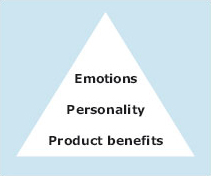5.4 The role of brands and branding
Keller (2003) distinguishes between a ‘small-b brand’ as defined by the American Marketing Association:
name, term, sign, symbol or design, or a combination of them, intended to identify the goods and services of one seller or group of sellers and to differentiate them from those of competition
(Keller, 2003, p. 3)
and the industry/practitioner definition of ‘a big-B brand’. For the latter it is the amount of awareness, reputation, prominence, etc. which creates the brand. The strategic role of brands cannot be over estimated. As described above, they provide the basis for differentiation. They also enable organisations to charge a price premium and act as a barrier to market entry for potential competitors. Some of the best known and earliest brands exist in those markets in which social marketers seek to intervene and change behaviour, for example, registration of some cigarette brand names: Dunhill, 1907; Camel, 1913; Marlboro, 1924; and Philip Morris, 1933. In the fast food sector McDonalds was established in 1937 and Burger King in 1954. By contrast some of the brand names associated with social objectives are more recent, for example, Friends of the Earth in 1969 and Greenpeace in 1971.
The following figure illustrates how we, as consumers, have various levels of relationships with brands. At the base level we are interested in the product benefits. These are something which we think about and can be learned from advertising. Second, advertising can lead us to assign a personality to the brand. McDonalds is a good example. since their overt and very successful campaign led many people, and particularly children, to assign the brand personality of the cheerful Ronald McDonald to the company and its products. Finally, the consumer develops emotional bonds with the product/brand. Belch and Belch (2001) describe how McCann-Erikson (one of the world's largest advertising agencies) has adopted this approach, believing that the creation of emotional bonds through advertising is essential to a positive psychological movement towards the product/brand and will reduce the potential for switching behaviour. Such emotional bonding with McDonalds could be achieved through the association with children's parties and happy family gatherings in which McDonalds staff and products play a part.

One question for social marketers is how to use the power of branding for social aims and objectives. Additionally, to what extent is the social marketer's role to break the emotional bonds we have with organisations such as McDonalds or to build bonds with social marketing brands?
